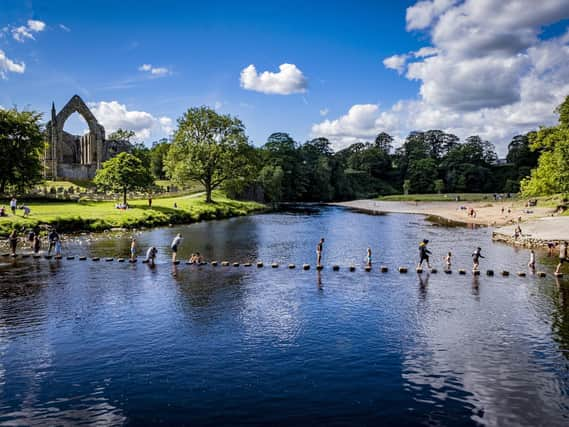Hey Diddle Diddle and the fascinating history and legends of Bolton Abbey estate


The 30,000 acre estate, nestled in the Yorkshire Dales, has been managed by the Devonshire family since the 1700s and still today remains the Yorkshire seat of the 12th Duke of Devonshire.
Home to everything from woodland and riverside paths to an impressive waterfall, a Priory Church and the ruins of an Augustinian Priory, and, of course, the much-loved stepping stones and beach area, there’s much on offer - and its landscape has been described as a jewel in the region’s crown.
Advertisement
Hide AdAdvertisement
Hide AdIt has both been admired by and inspired artists such as Turner, Ruskin and Royle, as well as poet William Wordsworth. And it is a landscape packed with history and legend too.
Among its quirkier associations, the estate is said to be where the nursery rhyme Hey Diddle Diddle originated. Legend has it that Prior Moone, the last Prior at Bolton Priory, was ‘diddled’ over the sale of a cow.
Laughing dogs at either side of one of its towers are thought to represent the amusement of the local community over the antics.
Bolton Abbey’s Laund Oak tree is another delightful example of the site’s rich history. Believed to be over 600-years-old, the tree is thought to have been named after John of Laund, who was the Prior from 1286 to 1330.
Advertisement
Hide AdAdvertisement
Hide AdIt is said by estate foresters to have produced some of the best acorns in its time - though it was blown over by high winds in a storm in 2016.
Simon’s Seat, a rocky outcrop 485m above sea level, is another of the estate’s highlights for visitors. Its name is thought to relate to Druids who followed religious figure Simon Magus.
And even the stepping stones - nowadays packed with families crossing the River Wharfe - have a story to tell. The 60 stones were once the crossing point for lay workers at the Priory.
History really is embedded into the very fabric of this place, in the estate’s stunning scenery, listed buildings and sites of scientific interest.
Advertisement
Hide AdAdvertisement
Hide AdSince Bolton Abbey’s reopening in May, those who want to visit will need to book.
Support The Yorkshire Post and become a subscriber today.
Your subscription will help us to continue to bring quality news to the people of Yorkshire. In return, you'll see fewer ads on site, get free access to our app and receive exclusive members-only offers.
So, please - if you can - pay for our work. Just £5 per month is the starting point. If you think that which we are trying to achieve is worth more, you can pay us what you think we are worth. By doing so, you will be investing in something that is becoming increasingly rare. Independent journalism that cares less about right and left and more about right and wrong. Journalism you can trust.
Thank you
James Mitchinson